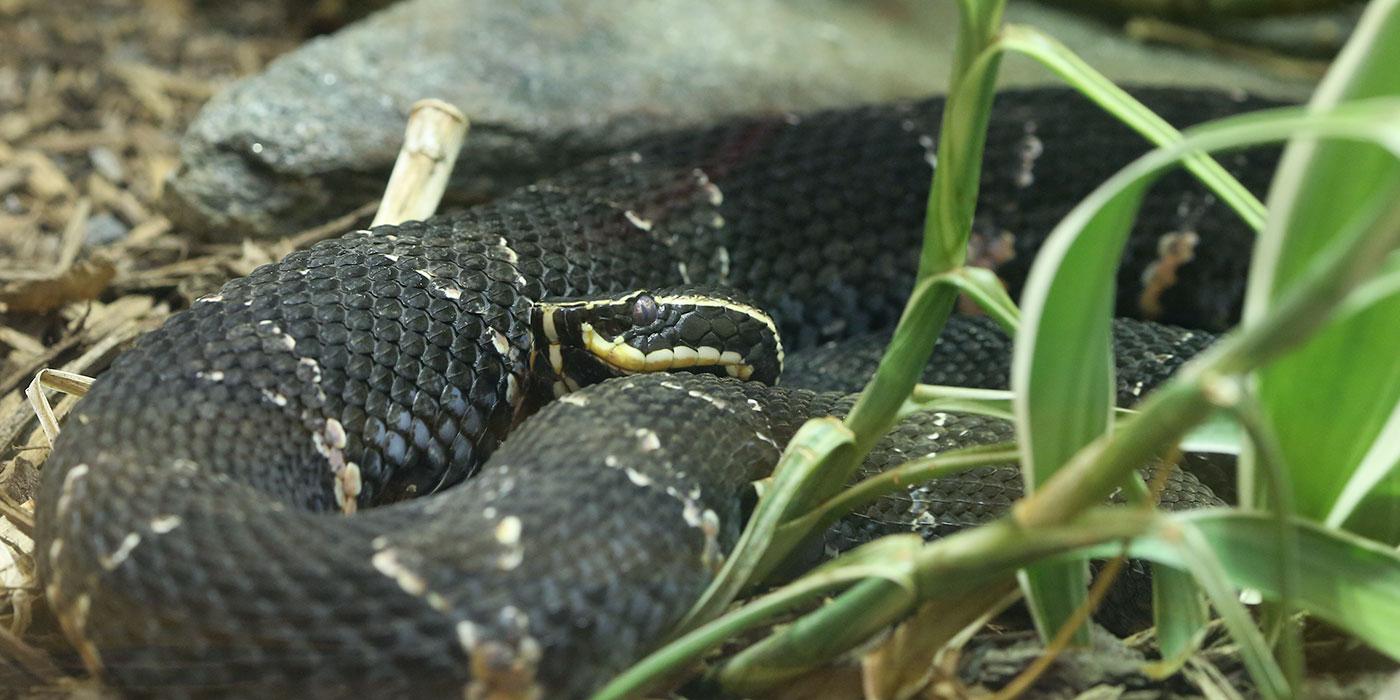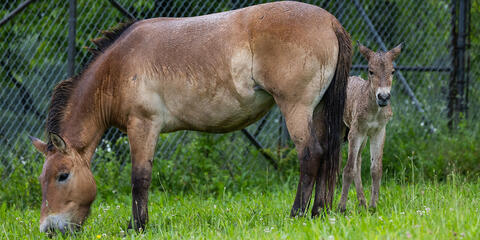Physical Description
Taylor's cantils have distinct, triangular-shaped heads that are dark brown to black with five white stripes that are accented in yellow or orange. Two stripes begin just above each eye, two above each side of the mouth and one centered underneath the head.
The snake's body is dark brown to black and marked with orange, yellow or white bands which fade with age. The tip of a juvenile's tail is yellow, an adaptation that helps it lure prey. Adults lose this yellow tip, as well as most of the coloration along their bodies, appearing significantly darker as they age.
They are equipped with elongated, hinged fangs that lie flat and horizontal within the jaw when in a resting position. The fangs are positioned beneath venom glands. When the snake strikes, the fangs swing forward. As it closes its jaw, the fangs penetrate its prey and deliver the venom.
Size
Native Habitat
Food/Eating Habits
Taylors cantils use their fangs, venom and a quick strike to capture and kill prey. They primarily eat mammals, amphibians, birds and lizards.
Juveniles have an added advantage for capturing prey — a caudal lure. The young snake wiggles the end of its tail, which is a different color or pattern than the rest of its body, to attract prey. Unsuspecting animals approach the bait, allowing the Taylor's cantil to strike. This caudal lure disappears when the snake reaches maturity.
At the Smithsonian's National Zoo, Taylor's cantils consume mice.
Sleep Habits
Reproduction and Development
Conservation Efforts
Habitat destruction is accelerating in the area where Taylor’s cantils are found, leading to a suspected decline in population. However, because humans rarely encounter this species, there is no documented evidence of this occurring.
Habitat loss is primarily a result of an increase in livestock agriculture in the region, which results in a decrease in vegetative cover. These snakes do not currently exist within protected areas, and their geographical distribution is limited. These snakes are also popular among collectors, because they are so rare.
The Smithsonian's National Zoo participates in the Association of Zoos and Aquariums' Species Survival Plan for Taylor's cantils, working to breed and maintain a healthy, genetically diverse population in human care.
Help this Species
- Choose your pets wisely, and do your research before bringing an animal home. Exotic animals don’t always make great pets. Many require special care and live for a long time. Tropical reptiles and small mammals are often traded internationally and may be victims of the illegal pet trade. Never release animals that have been kept as pets into the wild.
- Consider going meat-free one day each week to help reduce the demand on the livestock industry and decrease your carbon footprint!
- Share the story of this animal with others. Simply raising awareness about this species can contribute to its overall protection.
- Try fundraising for conservation organizations in new and fun ways. You could donate your birthday to conservation, host a bakesale to benefit wildlife or Adopt a Species!




